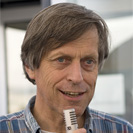 |
|
 |
|
|
Prof. Dr. Paul Wesselink (Amsterdam) The Simodont, a haptic dental trainer to prepare students for dental clinics |
|||
| J. Marjoke Vervoorn, Paul R Wesselink (Academic Centre for Dentistry, Amsterdam, the Netherlands) In the current situation dental students spend several years in a simulation laboratory where training is mostly restricted to non-realistic procedures in phantom heads and on plastic teeth. Only in the reality of the clinic students develop the competencies they are educated for. Realistic virtual reality systems offer the opportunity to let students from the beginning develop the required competencies learning from a pathology oriented basis rather than from plastic teeth. To serve this purpose a dental haptic simulator, Simodont (Moog FCS, Nieuw Vennep, the Netherlands and Academic Centre of Dentistry Amsterdam, The Netherlands), has been developed replacing traditional lab conditions by a realistic factual virtual learning environment. It has been created by bringing existing systems, new methods and 3D models into one environment. The Simodont consists of a force feedback robot arm connected to software in such a way that every movement of the arm is visualized on a screen. The system gives a realistic model of the behavior of the drill in a virtual tooth, under the control of a foot pedal. The force exerted by the operator on the drill drives a built in sound module which faithfully renders the sound of a dental drill. From data acquired from CT scans of extracted teeth a surface mesh is reconstructed out of segmented volumetric output of the segmentation tool using the marching cube algorithm resulting in realistic 3D images of teeth in which cutting can be accurately simulated. This virtual environment is interacting with another screen with courseware.The courseware has been organized as a waiting room in which all sorts of dental (pre)clinical procedures are available. The procedures are following the steps of a problem solving cycle thus continuously training students in a structured approach of any (clinical) problem. During the steps students can be tested on their theoretical knowledge related to the content of the procedure. Acceptance of such a simulator as a training tool is only possible if the level of realism of the system is close to reality as we experienced in our school using other simulators. Also evidence was needed that skills developed in virtual reality are transferred to reality. Therefore, prior to further development of the Simodont and its introduction in dental education various experiments have been carried out. Results show that teachers, students and general practitioners agreed that the level of realism of the system was sufficient to replace part of the traditional preclinical as well as the clinical training. Also transfer of skills from virtual reality to reality occurred. It was concluded that that the simulator is a valuable learning tool for (pre)clinical training. |
|||
| Copyright © 2011 Quintessenz Verlags-GmbH, Berlin |